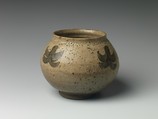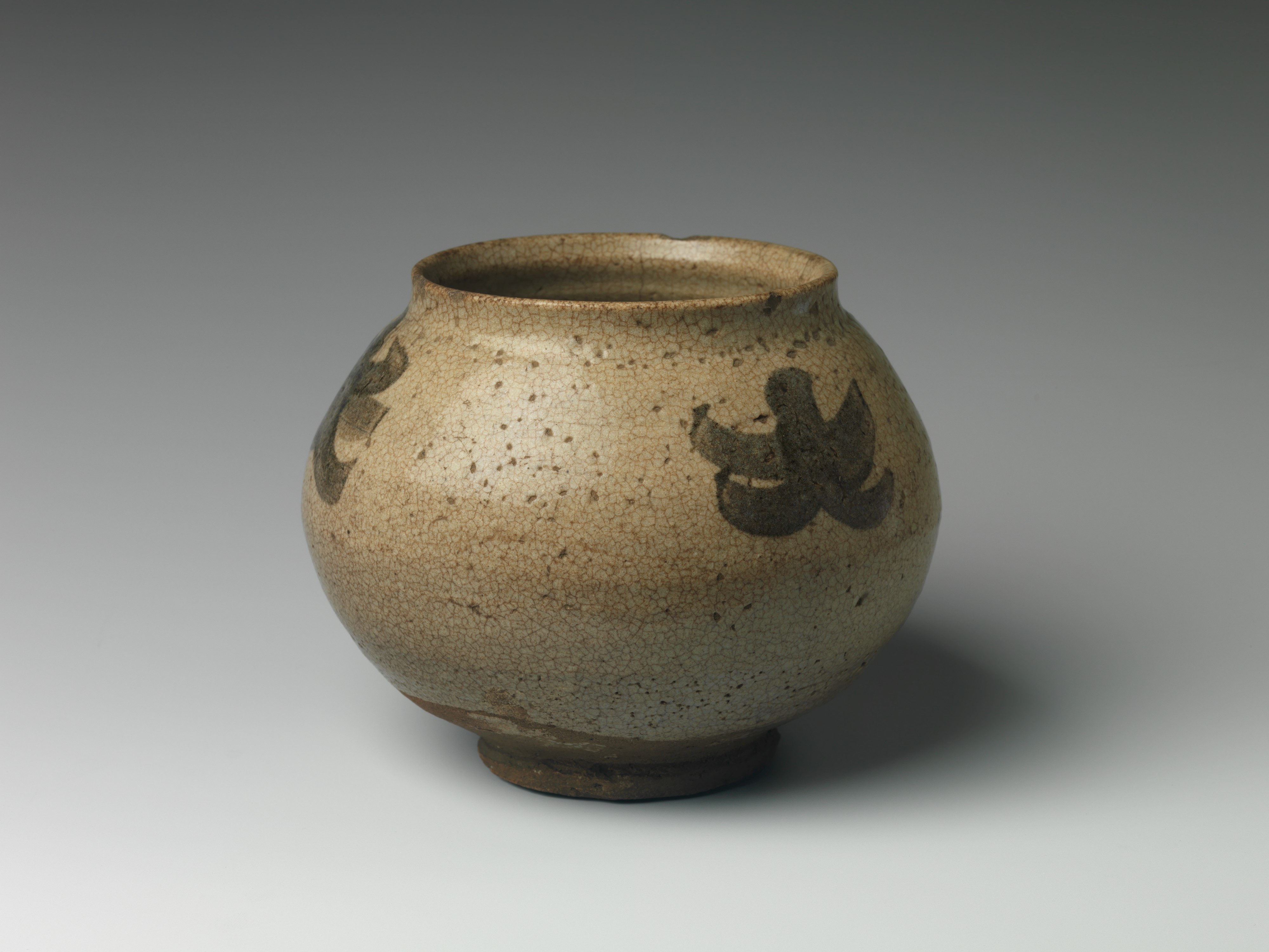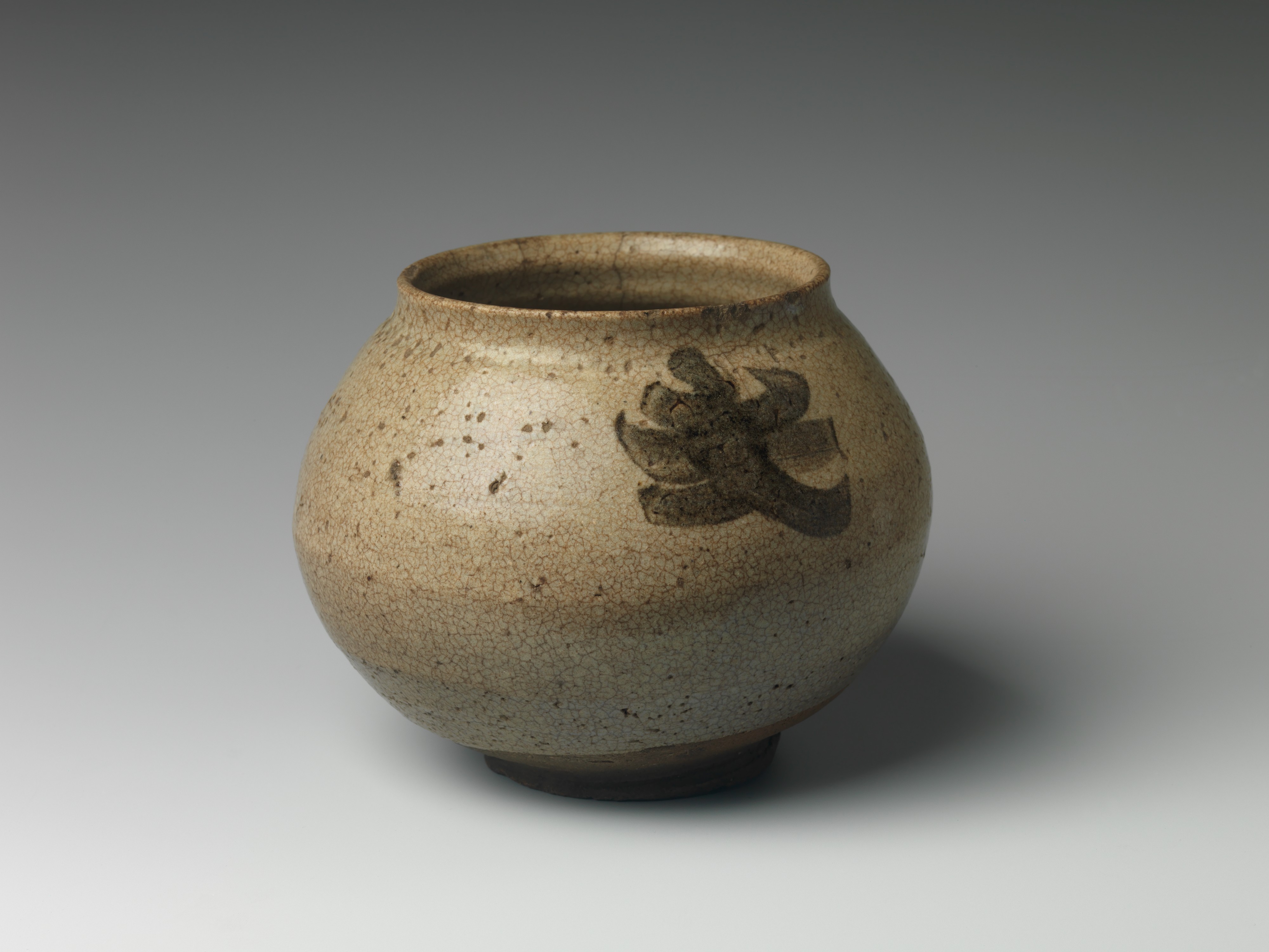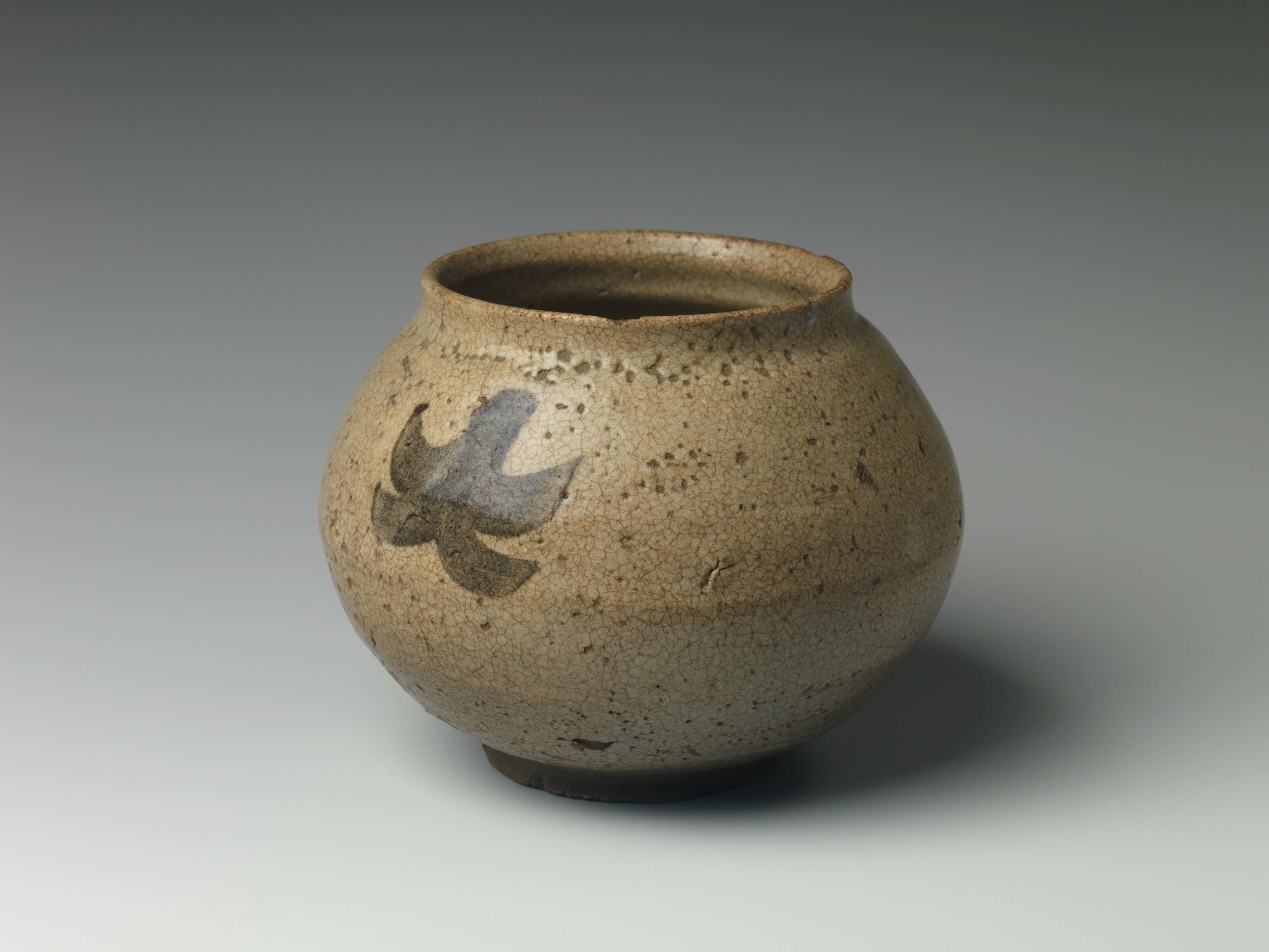Jar
Momoyama period (1573–1615)
Not on view
It was in the Karatsu area of the island of Kyushu that Korean potters first introduced the noborigama, or climbing kiln, to Japan. This type of kiln was more advanced than previous ones, and allowed for better control during firing. This jar, painted with a simple motif reminiscent of the character dai, or great, was made in such a kiln. This austere aesthetic was promoted by followers of the tea ceremony during the Momoyama period. The techniques employed by Korean potters at Karatsu kiln sites were integral to the emergence of porcelain production in Japan in the early seventeenth century.
Due to rights restrictions, this image cannot be enlarged, viewed at full screen, or downloaded.
This artwork is meant to be viewed from right to left. Scroll left to view more.






